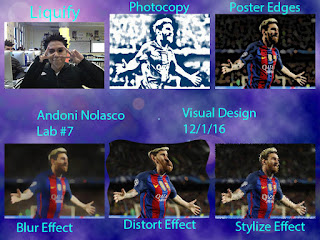Types of Digital Image File
There are five different types of digital image files which are JNG( also known as JPEG), GIF, PNG, TIF( also known as TIFF), and RAW. The first file, JNG, stands for Joint Photographic Expert Group, which created this standard for this type of image formatting. JPEG files are images that have been compressed to store a lot of information in a small-size file. Most digital cameras store photos in JPEG format, because then you can take more photos on one camera card than you can with other formats. However, some of the image's detail because the file must be compressed to a small size. it is usually used for photographs on the web but are not the best option line drawings, logos, or graphics.
GIF stands for Graphic Interchange Format and it compresses images like JNG but it is lossless because no detail in the image is lost. Also GIF cannot make images as small as JNG. GIF can be used for animations or web but is not suitable fro printing or photographs because of the limited color range.

PNG stands for Portable Network Graphics and was made as an open format o replace GIF. It allows for a full range of color and better compression which is a reason why it is used exclusively for web images. For photographs, PNG is not as good as JPEG, because it creates a larger file. But for images with some text, or line art, it’s better.
TIF ( short for TIFF) stands for Tagged Image File Format and creates very large file sizes by being uncompressed and thus contain a lot of detail image data. some characteristics of TIF images are that they are very flexible in terms of color and content. Because TIF contain a lot of image data, it is a common file type used in photo software and page layout software.
GIF stands for Graphic Interchange Format and it compresses images like JNG but it is lossless because no detail in the image is lost. Also GIF cannot make images as small as JNG. GIF can be used for animations or web but is not suitable fro printing or photographs because of the limited color range.

PNG stands for Portable Network Graphics and was made as an open format o replace GIF. It allows for a full range of color and better compression which is a reason why it is used exclusively for web images. For photographs, PNG is not as good as JPEG, because it creates a larger file. But for images with some text, or line art, it’s better.
TIF ( short for TIFF) stands for Tagged Image File Format and creates very large file sizes by being uncompressed and thus contain a lot of detail image data. some characteristics of TIF images are that they are very flexible in terms of color and content. Because TIF contain a lot of image data, it is a common file type used in photo software and page layout software.
The last digital image file type is RAW image files, which are called that because the images have not processed and therefore cannot be edited or printed yet. Raw files usually contain a vast amount of data that is uncompressed. Therefore, the size of a raw file is extremely large and usually they are converted to TIFF before editing and color-correcting.

Comments
Post a Comment